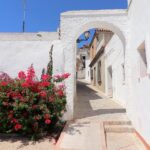Even if you’re not a big wine drinker, taking a trip around the Sherry Triangle in Cadiz is well worth adding to your itinerary. The older wineries are beautiful to walk around and by joining guided tours you’ll learn all about the history of the wineries and their production methods. There are a lot of wineries in Spain to visit, but the wineries in the Sherry Triangle are in a class of their own. Before we get to the wineries (or bodegas in Spanish), here are the answers to some common questions about sherry and the Sherry Triangle.
- What is sherry?
- What are bodegas?
- Where is the Sherry Triangle?
- Why is sherry only produced in the Sherry Triangle?
- Must-visit wineries in the Sherry Triangle
What is sherry?
I’m not a wine expert, so I’ll put this in the simplest terms possible. Sherry is a fortified wine produced only within the Sherry Triangle in southern Spain. It’s produced using 1 of 3 white grapes. Despite it coming from a white grape, it has a range of colours including a very dark brown, depending on how it’s produced and how long it ages. It’s actually one of the oldest wines in the world, dating back to the Moorish occupation of Jerez in the 13th century.
What are bodegas?
This is actually a really easy question to answer. A bodega refers to a wine cellar or a place to store wine, so bodegas is just the plural form of that. It can get a bit confusing when people are using the words bodegas and wineries interchangeably, but they mean the same thing. So, when you read about wineries in the Sherry Triangle you’ll come across the term bodegas as well.
Where is the Sherry Triangle?
The Sherry Triangle is located in the Province of Cadiz, in the southwestern corner of Andalusia. 3 cities make up the points of the triangle: Sanlucar de Barrameda, Jerez de la Frontera, and El Puerto de Santa Maria. The Sherry Triangle doesn’t include the city of Cadiz itself, but that doesn’t mean you can’t take a day trip there as well. The area may be small but there are plenty of wineries in the Sherry Triangle to choose from.
Why is sherry only produced in the Sherry Triangle?
The climate in this area is unique and allows for 3 different types of grapes to be grown. These grapes are then used in the production of sherry. You can actually taste the difference in the wines when you visit the wineries in each city, as they all have slightly different climates despite being close to one another. That’s why so many people enjoy visiting the different wineries in the Sherry Triangle.
Must-visit wineries in the Sherry Triangle
Hopefully that answers some of your questions about sherry wine, and has got you in the mood to learn about some wineries in the Sherry Triangle that are worth visiting on any trip to southern Spain (and are a few of the top wineries in Spain too).
Bodegas Barbadillo
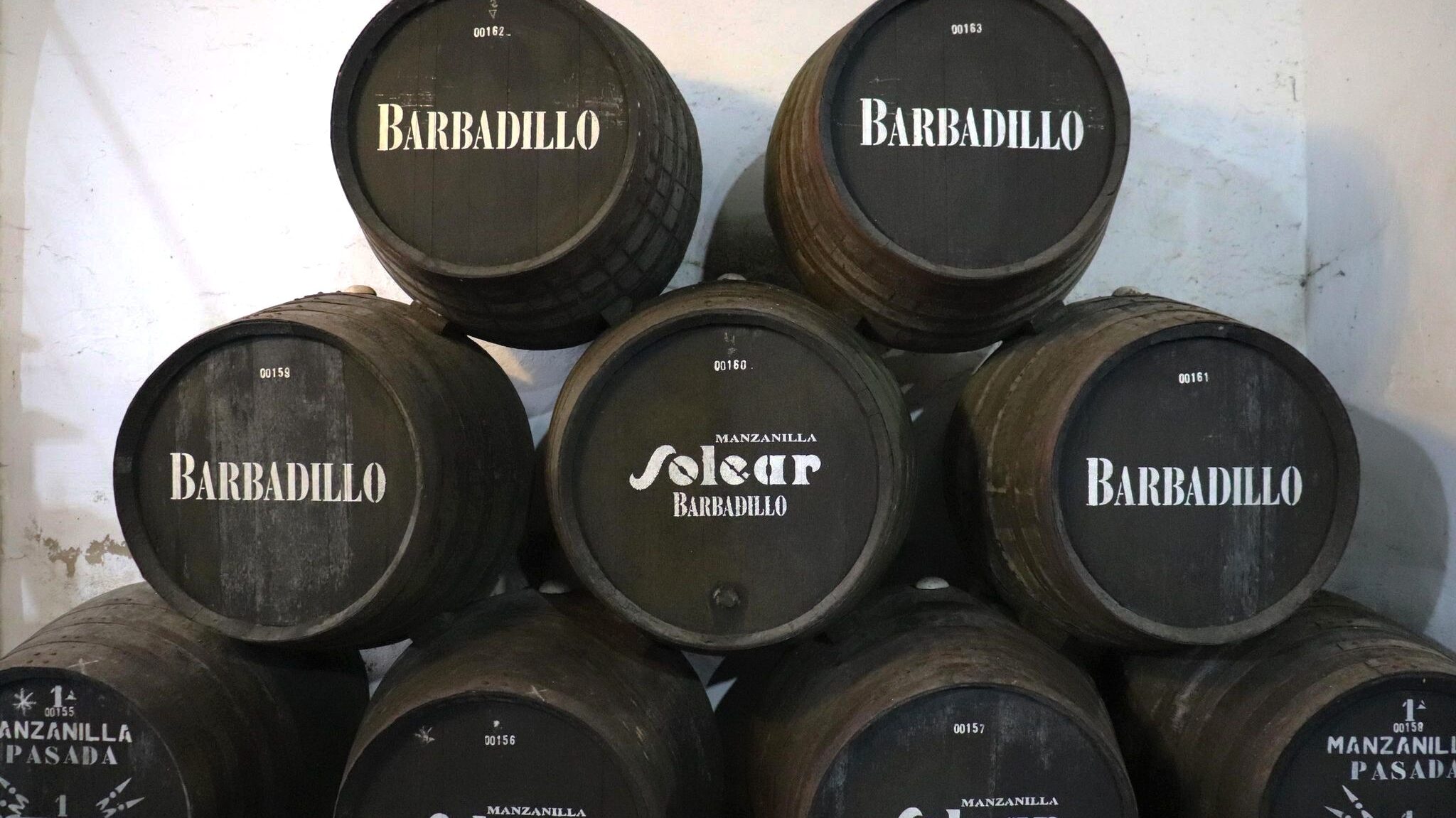
First up on my list of the best wineries in the Sherry Triangle is Bodegas Barbadillo, which is the first winery we visited while we were exploring the Province of Cadiz. You may have come across Manzanilla sherry at some point, which is a dry white sherry made from palomino grapes. Well, Sanlucar de Barrameda is the only location in the world where it can be produced and be officially called Manzanilla.
Location
Bodegas Barbadillo is located right in the heart of Sanlucar de Barrameda, directly next to another main attraction in the small coastal city: Castillo de Santiago. If you decide to drive to Sanlucar, parking isn’t the easiest along its narrow streets, but you will eventually find an empty place somewhere.

History
Bodegas Barbadillo dates back to 1821, and in 1827 they were the first to give the name of Manzanilla to their wine and bottle it. Seven generations later and it’s still a family run business, but it’s now the largest producer of Manzanilla in the world, and one of the largest producers of sherry in general. It’s a lovely bodegas to walk around and you can see how much history there is within its walls. If you’re looking for some unique wines from Andalusia, you should definitely visit here.

Bodegas tour information
We joined Bodegas Barbadillo’s guided winery tour, which included entry into the Museo de la Manzanilla as well. The sherry tour also included wine tasting, where we were able to sample 4 different types of Barbadillo wine. Guided tours in English take place at 11am and last for 1 hour, so it’s a tour that you can very easily add into your itinerary. Our guide explained all of the technical terms and science behind the production of their wines, and gave us a brief history of the winery as well.

Review of the bodegas tour
In terms of wineries in the Sherry Triangle, this has to be one of the best. Overall, I thought it was a really interesting tour and I loved learning about the history of Bodegas Barbadillo. The explanation of the wine-making process can be a bit hard to follow along with, especially if you aren’t a wine expert, but our guide explained it in a way that made it a lot more bearable and fun to listen to.
Tio Pepe
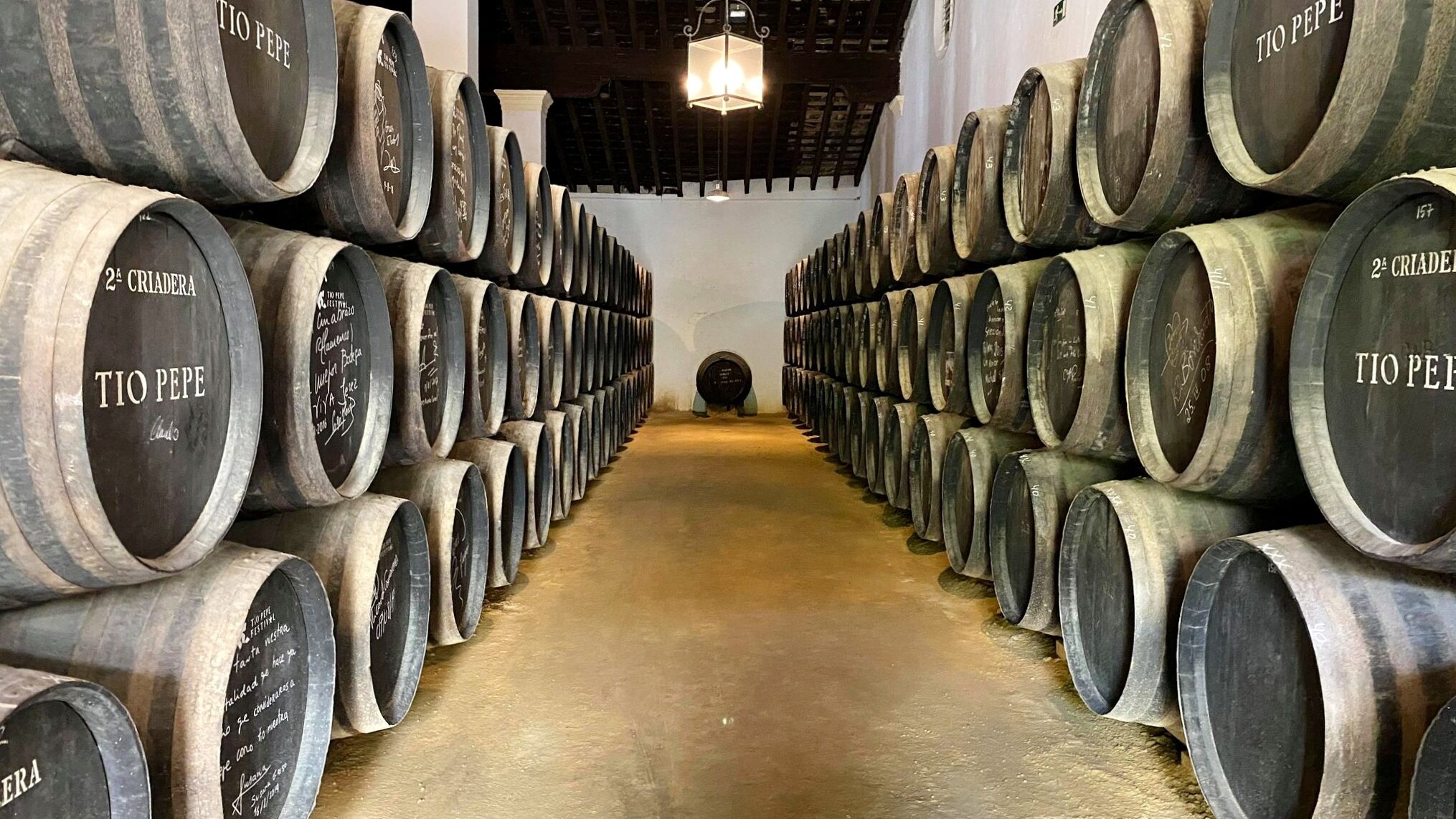
You can’t miss the chance to visit Jerez de la Frontera. The city is home to the finest sherry producers in the world, and is absolutely stunning to walk around. I bet you didn’t know that the word “sherry” is the English form of Jerez! Well, you might have done but I certainly didn’t until we visited one of the city’s best bodegas. There are a lot of sherry tours in Jerez to choose from, so it really is a wine lovers dream.
Location
Bodegas Tio Pepe is ideally located in the middle of Jerez’s city centre, right next to the stunning Alcazar de Jerez and the Catedral de Jerez. Parking on the street is a bit difficult unless you get there very early in the morning, so I would recommend using the underground parking lot directly opposite the bodegas. It’s very reasonably priced and is much better than parking your car directly in the hot Spanish sun.

History
The history of Tio Pepe dates back to 1835, when it was founded by Manuel Maria Gonzalez under the name Gonzalez Byass. He was new to the world of wine making, so he asked his uncle for advice, whom he affectionately called Tio Pepe. As a thank you, he gave him part of the winery and named the original cask of the soleras process after him. By 1844 they were exporting their sherry to the UK where it was very highly received. Since then it’s has only grown in popularity, becoming the world’s largest producer of sherry.
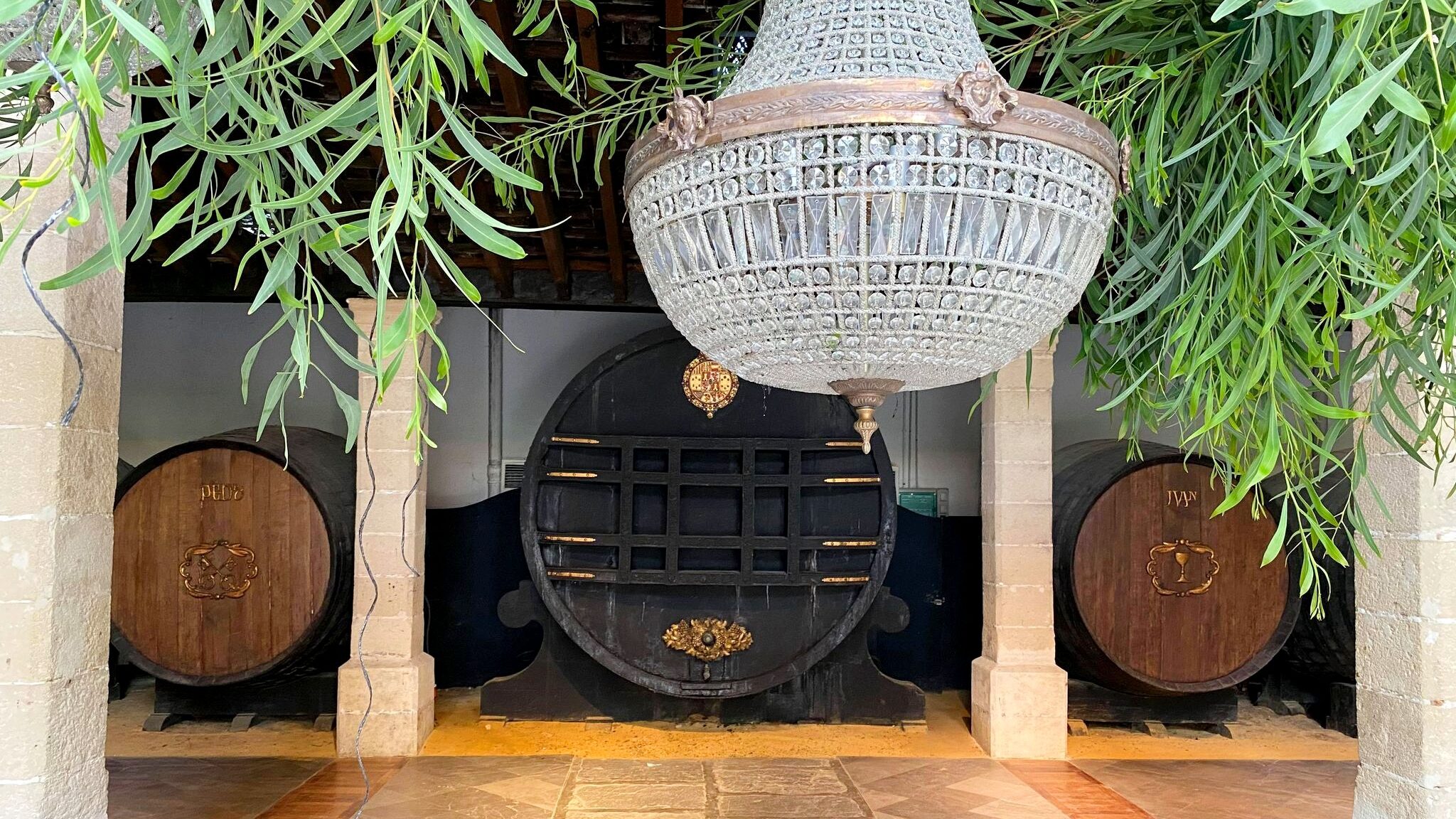
Bodegas tour information
Bodegas Tio Pepe have several winery tours to choose from. We joined them on their Uncle Pepe Tour, which included a tasting of 2 of their wines at the end of the tour, as well as a walking tour of the bodegas and a stroll down one of the most beautiful streets in the whole of Spain: Ciegos Street. The tour was done in a large group, and it started off with a very informative video about Tio Pepe and the Gonzalez Byass brand.
Our guide taught us about the history of the bodegas as well as the processes their wines go through, and spoke perfect English. They offer tours in both English and Spanish, so make sure you double check when you’re booking if you want an English-specific tour. Including the wine tasting at the end, the sherry tour took just under 2 hours, and we spent some time in the shop afterwards.

Review of the bodegas tour
Tio Pepe is one of the biggest names in sherry production and it has one of the best wineries in the Sherry Triangle. Their bodegas is huge and there is a lot to see in a short amount of time so we didn’t have too many opportunities to browse each area. I loved learning about their history and how they grew to be such a a huge name in the world of sherry making.
The bar and restaurant area where we did the wine tasting was very modern and clean, but I would have preferred it if we had the wine tasting in one of the historic parts. Overall, it was a good tour and one I would recommend if you’re looking to visit a sherry bodegas in Cadiz, and want to sample some of the best sherry in Jerez. There are, however, other wineries in the Sherry Triangle that offer more wine tastings for guests.
Bodegas Lustau
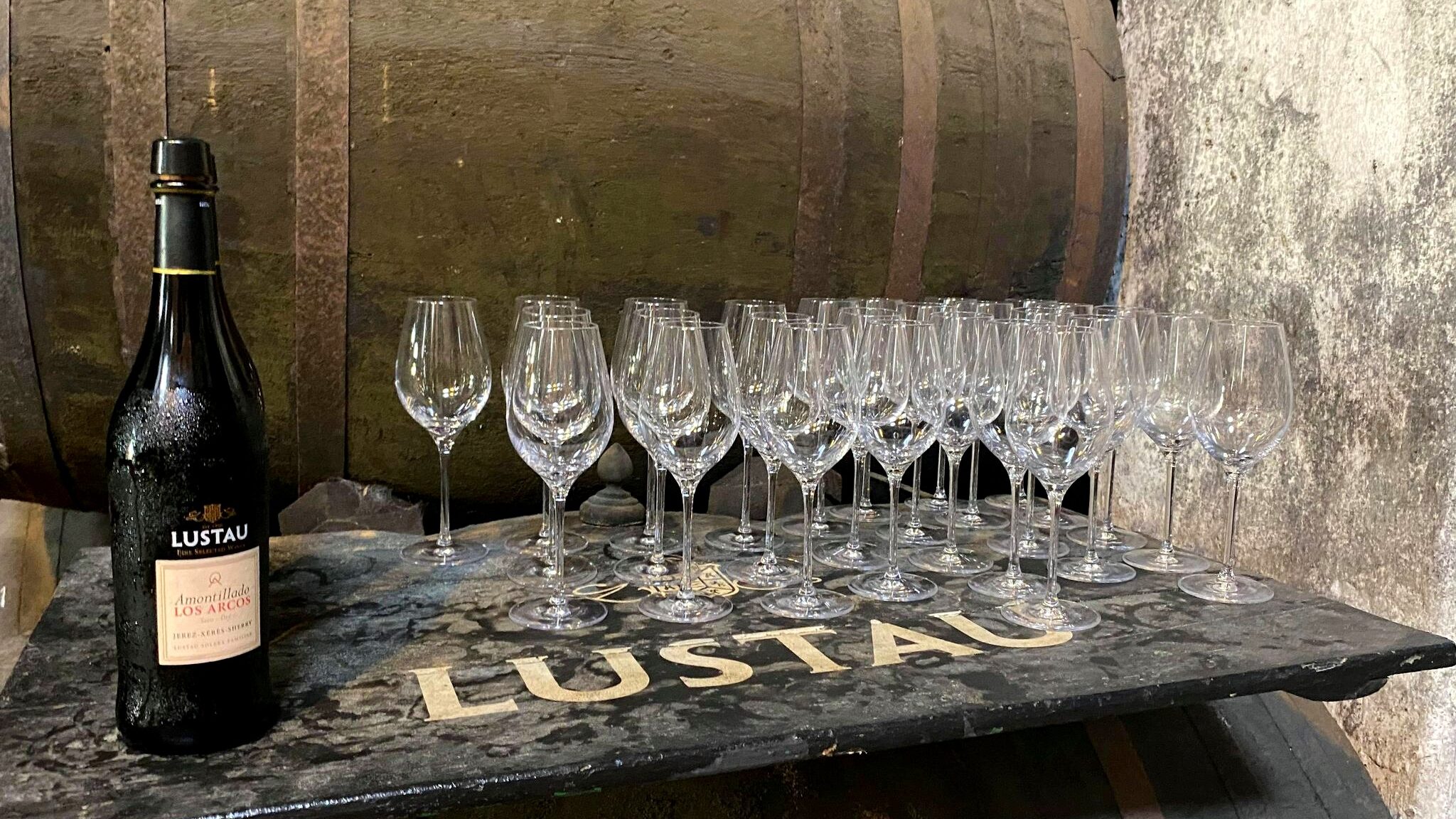
Location
Bodegas Lustau is another fantastic option if you’re looking for the best wineries in the Sherry Triangle. This bodegas is located a little further away from the city’s main attractions, but sits quite close to the train station so it’s easily accessible. If you have a car, there is ample parking along the streets nearby. Depending what time your tour is at you may even be able to park for free, which is a bonus. The bodegas itself is gorgeous inside so you won’t be disappointed.

History
Lustau has quite an interesting history behind it. The bodegas was founded in 1896 by a local court clerk named Jose Berdejo, who worked the vines on his land in his spare time. He slowly began to build up his sherry company and in the 1940s he was joined by his son-in-law who began to expand the brand. Today, it’s one of the most recognizable sherry brands in the world, and is the only winery in the entire Sherry Triangle to operate in the 3 main cities. No Andalusia winery tour is complete without making a stop at one of the most iconic wineries in the Sherry Triangle.

Bodegas tour information
We joined Lustau’s full tasting tour, which I would highly recommend, even if you aren’t a big wine drinker. Our tour guide was extremely knowledgeable in all things related to Lustau and wine in general. She was also a licensed sommelier, so her love for wine really shone through and made the tour even better. The tour lasted for 1.5 hours, and included a walk through some of the most important parts of the winery.
At the end of the tour you’ll be treated to a tasting of their famous Vermouth (Vermut in Spanish). In total there were 9 different wine tastings so it’s well worth your money to go on Lustau’s sherry tour.
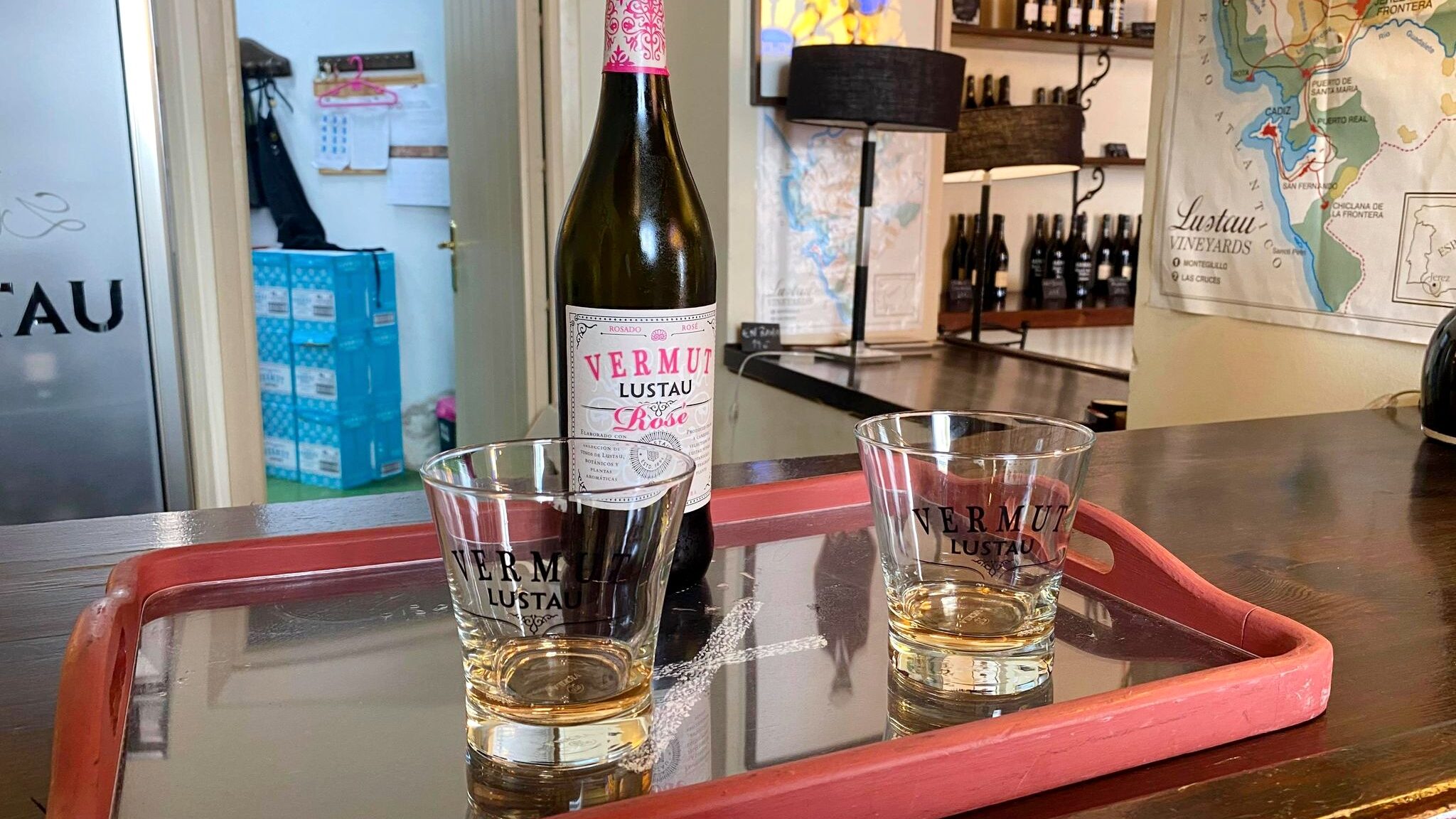
Review of the bodegas tour
If you really want to get a deep understanding of the history of sherry in the region and love sampling different types of wine, Lustau is the perfect choice. Rather than just letting us drink the wine, our guide explained the smells and tastes we would come across and the process that each of the wines undergoes to get those distinctions. I love history, so I was really pleased that in each of the rooms we stopped at inside the bodegas, our guide explained what the room was, how it was used, and the history behind it. This is one of the best guided tours I’ve been on out of all of the wineries in the Sherry Triangle.
Bodegas Castillo
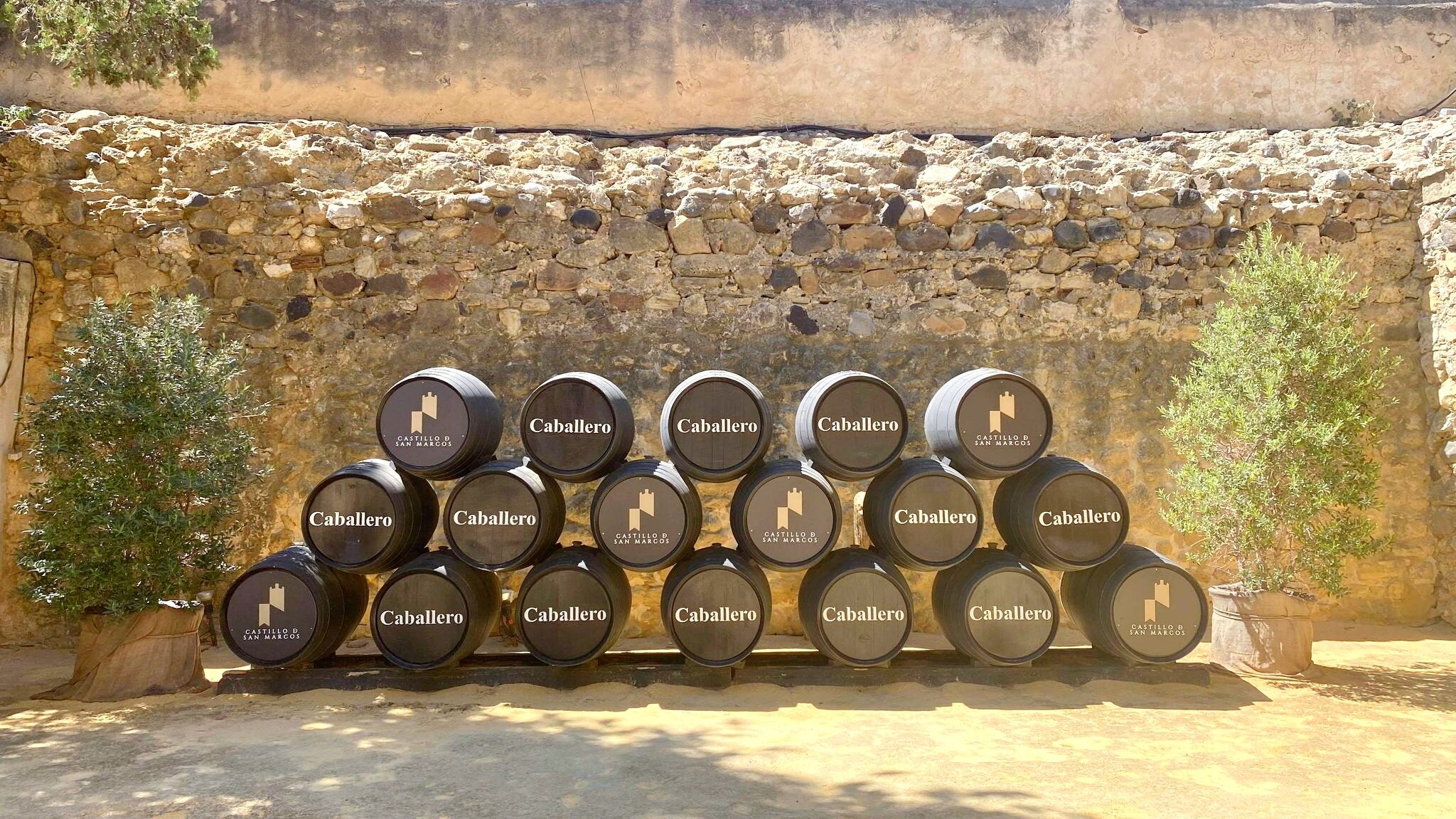
The final city where you’ll find wineries in the Sherry Triangle is El Puerto de Santa Maria. It may only be small, but the city played an important role during the period of exploration when Spain was trading with the new world. In fact, it has strong ties to Christopher Columbus, who named one of his ships after the town. El Puerto is also home to a number of popular wineries in the Sherry Triangle, including a winery based out of a castle.
Location
For those of you who love history and wine, in El Puerto you can go on a guided tour of Castillo de San Marcos, and finish the tour with a visit to the castle’s very own bodegas (which is owned by Lustau). The castle is one of the city’s main attractions, and is next to the tourism office, so you can’t miss it. Parking is a bit difficult though so you may need to use an underground parking garage. If you just want to visit the wine shop, the entrance is located at the back of the castle.
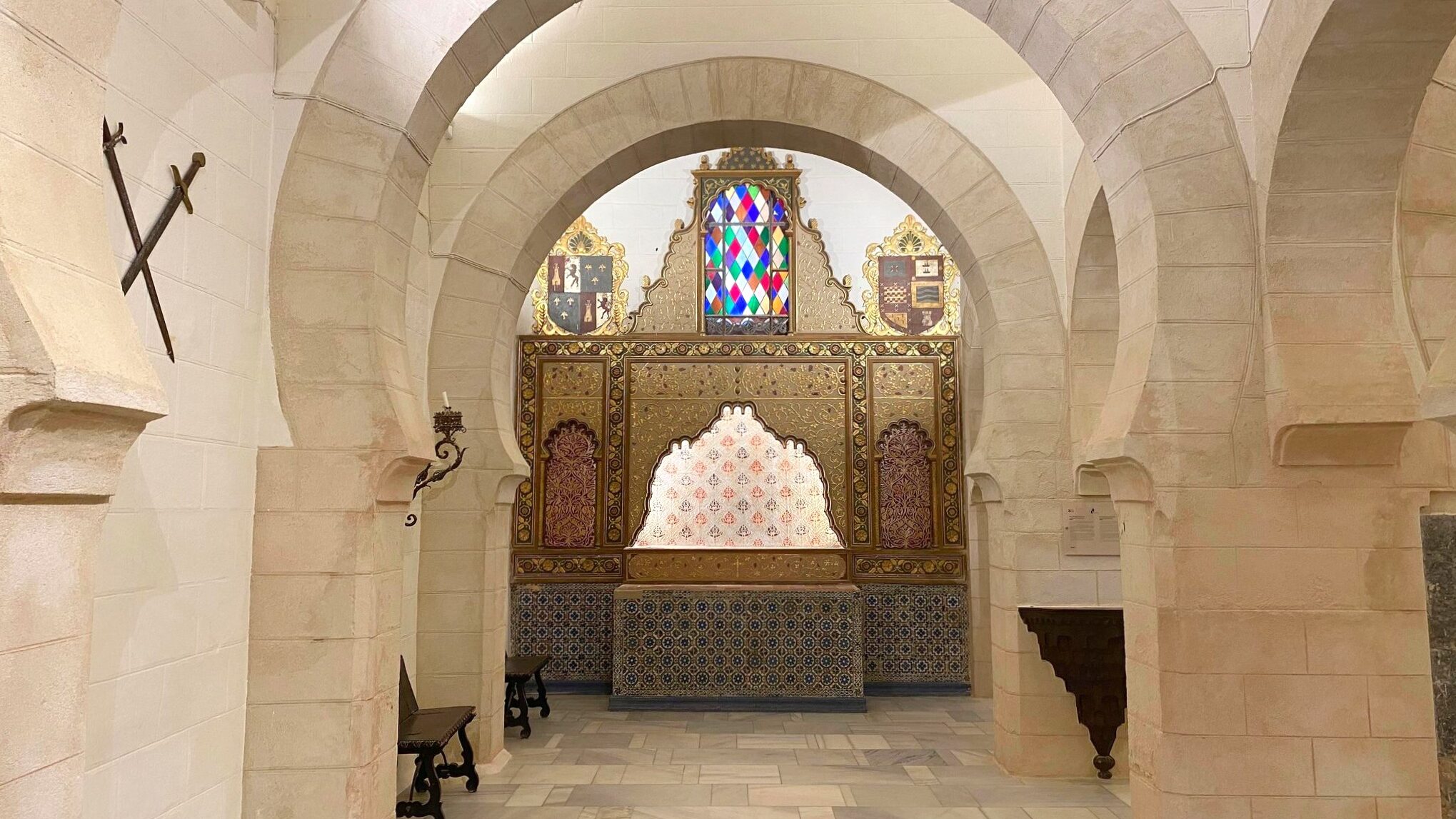
History
Castillo de San Marcos dates back to the 13th century, and has undergone a series of changes over its lifetime. As you walk through the castle you’ll notice that it still has some of its Moorish archways and architecture, despite it being taken over by the Christians. The castle as a whole has been through a lot of restorations recently. You can tour the castles winery which is owned by the Caballero Group (Lustau), with a history dating back to 1830.

Bodegas tour information
We went on the Guided Visit to the Castle and Winery, which as phenomenal. The tour of the castle itself lasts 45 minutes, and you get to learn about the history of it, the role it’s played in the development of the city, and what famous historical figures have passed through its doors.
The second part of the tour also lasts 45 minutes and consists of a visit to the castle’s bodegas and focuses on the culture of sherry wine in El Puerto in the present day. And of course you finish with a bit of wine tasting! The guided tour is a great mixture of old and new, and since it’s set in a castle how can you say no?

Review of the bodegas tour
This is one of the most unique wineries in the Sherry Triangle and I love the fact that we were able to tour the castle beforehand. The wine tasting is done in the wine shop, so we were able to sit down and rest a bit after the castle tour. It would have been amazing if the tasting was done on the roof of the castle, but there’s no place to store the wine up there so that’s wishful thinking.
The Sherry Triangle is the perfect location in southern Spain to visit if you’re a wine lover. Even if you aren’t, there are plenty of things to do in the Province of Cadiz, and these 3 sherry producing cities have a lot of history between them. Don’t forget to check out some of the beaches in Cadiz, after a very stressful day of tasting all that lovely sherry wine – the province is famous for them!
I would love to hear if you’ve been to any other wineries in the Sherry Triangle so please feel free to reach out. I’m always looking to visit more unique places in Andalusia. Don’t forget to follow me on Instagram for more travel tips!
This post may contain affiliate links, which means I may earn a commission from the discount codes used or when a link/ad is clicked. All purchases made will come at no extra cost to you, and I only include products and services that I would personally recommend.
Pin this blog post for later!




